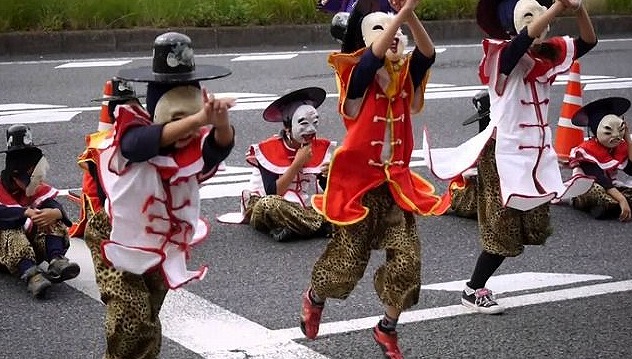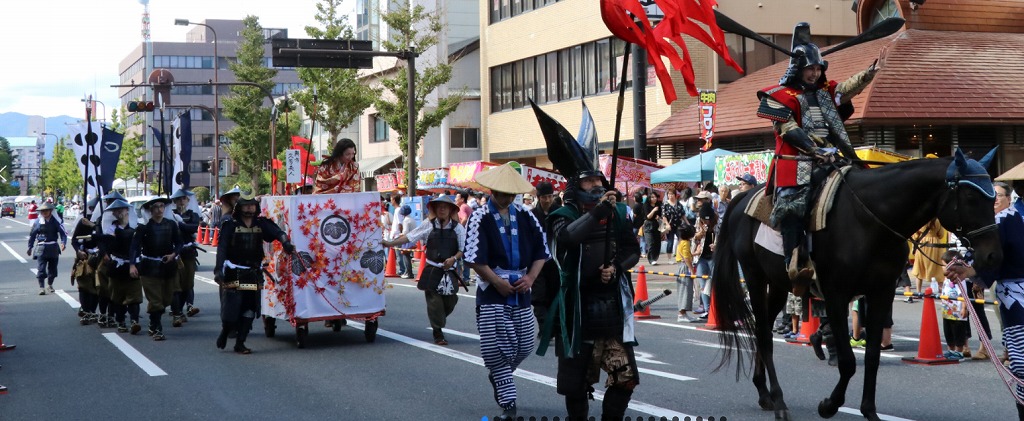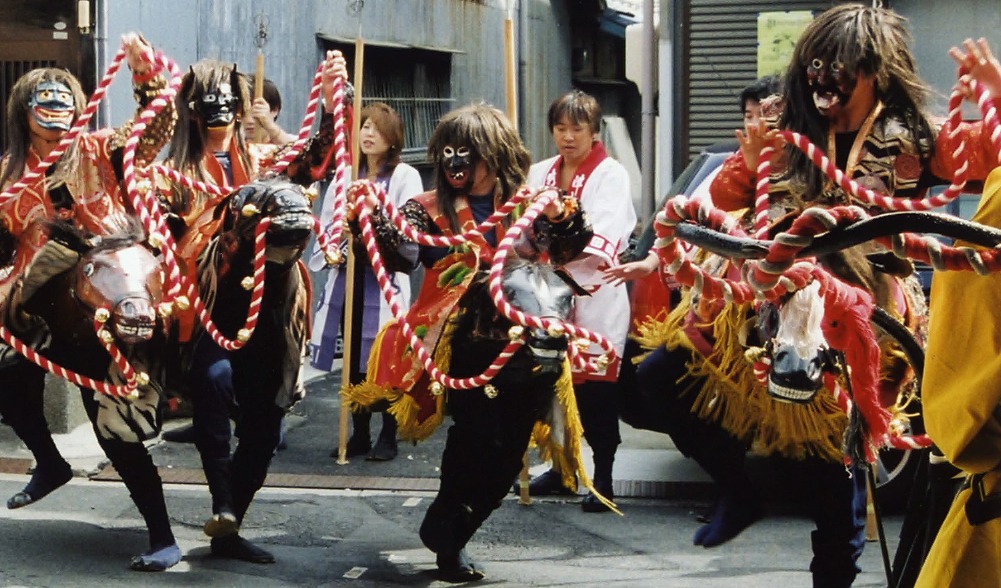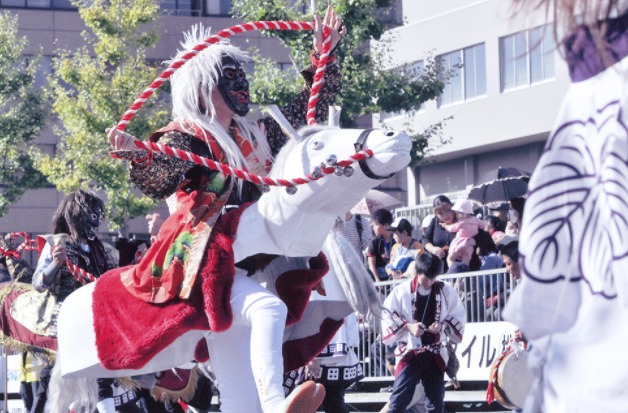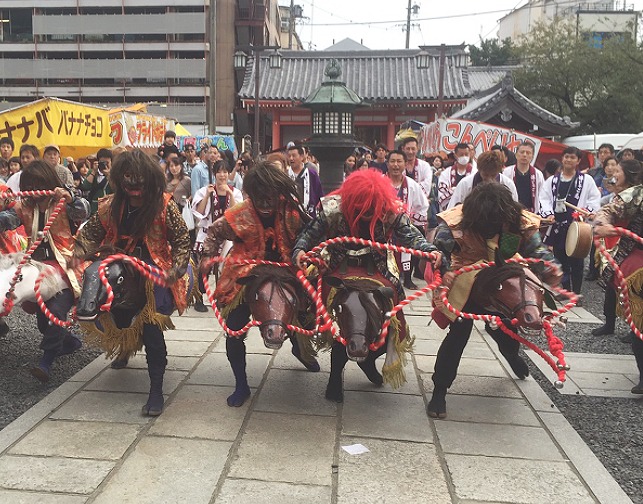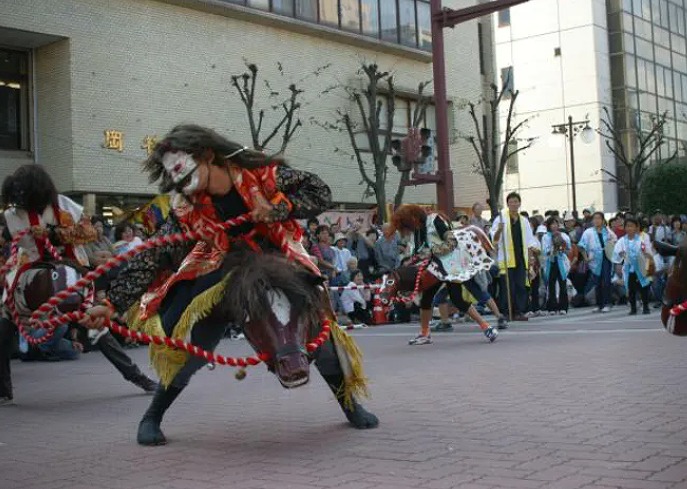Strange characters in “Tsu festival”
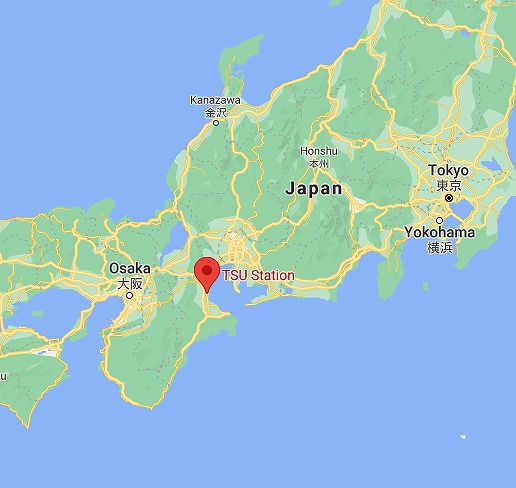

Date: Saturday and Sunday around October 10
Location: around the castle, Phoenix Street, etc.
Access: Just over an hour from Kintetsu Nagoya to Tsu Shinmachi
Tsu, the city and the port
The present Mie Prefecture used to be called “Ise 伊勢”. Its center is Tsu 津. There is an old saying, “It is Tsu that supports Ise, and it is Ise that supports Tsu.” The shortest name in Japan, “Tsu,” means port. And when we think of Ise, we all think of Ise grand shrine. In the 17th century, when travel became popular, paying a visit to the Ise grand shrine became an excuse to travel. The previous phrase means that Tsu prospered as a gateway because of the Ise grand shrine, and the Ise shrine prospered because of the port of Tsu.
Tsu festival
In Tsu, there is a very strange performing folk art that uses masks. Tsu holds a folk performing art that is rare in Japan. These are “Shagouma” and “Tojin Odori”. They are performed at the Tsu Festival.
The history of Tsu festival dates back to the early 17th century. The lord who ruled the area moved the Hachiman shrine in 1632. Five years later the festival began. And the feudal lord himself donated money to the shrine, and the festival began to be held with the interest from that money. Since the fall of the samurai regime in the 19th century, the festival has continued to be held, although there have been some changes in the offering. In the old days, there were many masquerade parades and floats. Today, it is a place for the Daimyo processions (the feudal lords’ processions) and various entertainment performances. World War Ⅱ burned down all the floats and decorations. Among them, the ones we will introduce here are “Shagouma” and “Tojin Odori 唐人踊り”.
Shagouma しゃご馬
“Shagouma” is a folk performing art that resembles a mounted warrior. Originally, it was an actual mounted warrior who walked as a guard at festivals. They disappeared with the end of the samurai era, but somehow they have remained as a folk art until now. They wear a wig made of red dyed yak hair on their heads. It is said that the purpose of this wig is to gain divine power through this hair. Then they put on a jinbaori 陣羽織 (a traditional cloth worn) and a demon mask. Jinbaori is a special jacket worn by samurai during wars in the past. In spite of their shabby appearance, they wear papier-mâché in the shape of horses on their bodies as if they are swimming floats. They look like children playing at an amusement park.
The horses have reins attached to them, and while holding these reins, with the sound of hora shells they move with a vigorous jumping motion, accompanied by the sound of drums and vigorous shouting in the background. Sometimes they attack children. This is why all the children living in this area are afraid of “Shagouma”. Therefore, parents in this area scold their children when they misbehave, saying, “If you misbehave, Shagouma will come. They are so scary to the children, but the citizens love them. During the festival, they go around the city and perform in front of stores. Then they receive a congratulatory gift.
There is no similar art form in the whole country. It is a folk art unique to Tsu.
Tojin-odori (Chinese dance) 唐人踊り
Joseon missions
“Tojin 唐人” represents the old Chinese dynasty “Tang”, so the word Toujin originally meant Chinese. However, since the Tokugawa shogunate didn’t allow most foreigners to enter in the 17th century, it also became a name for foreigners in general.

https://www.chugoku-np.co.jp/blog/article/article.php?comment_id=6861&comment_sub_id=0&category_id=1104
For this reason, the “Tojin odori” here at Tsu Festival refers to the Korean envoys. Because the Tokugawa Shogunate severely restricted trade with foreign countries, there were few opportunities for ordinary people to see foreigners. However, only the Korean delegation occasionally visited Japan and met the shogun. During the Tokugawa Shogunate, there are records of 12 visits. The foreign knowledge and culture they brought was very important to Japan. They marched in a procession from Kyushu to Edo (Tokyo), which became a very popular topic among the common people. As a result, many people began to imitate them. The ” Tojin Odori” of the Tsu Festival is said to be an imitation of this.
Outline of “Tojin-odori”
Tojin-odori consists of 23 people in total. A flag bearer, a dancer, a general, and a bow and arrow bearer. They are accompanied by flutes, drums, and, unusually, buglers. Each one uses a different mask, so there are 23 different types in total. Some are smiling, some are angry, and there is a lot of variety. The clothes are also different, but only the dancers wear white. The dancer raises both hands upward and brings them together, then dances as if jumping while looking up to the sky. It is a strange dance, but people call it the “Dance of Joy” because of its appearance. The Tojin-dance also marches through the town during the festival, giving performances from time to time. Over the course of two days, they visit about 300 houses and receive congratulatory gifts.
There is a museum in Wakebemachi 分部町, the birthplace of the dance, where you can see the masks and costumes at any time.
